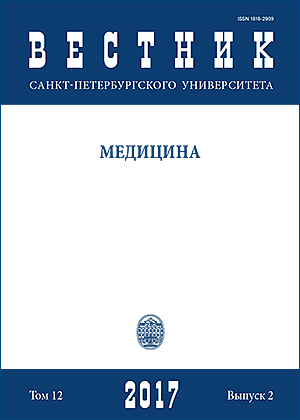EXPERIMENTAL BASIS FOR HYGIENIC ASSESSMENT METHODS USING GEOTUBE DEWATERING DURING STORAGE OF MUNICIPAL WASTEWATER PRECIPITANTS
Abstract
The sediment of sewage water in treatment facilities contains most of the elements of the periodic table and consists of 60–70 % of organic compounds. The growth storage facilities for these sediments leads to estrangement of large city areas. For example in Saint Petersburg, Russia, approximately 150 hectares are occupied with waste sediment storage. Geotube technology helps to reduce harmful exposure of heavy metals and toxic elements such as cadmium, lead, zinc, nickel, copper. The product of Geotube technology also may be used in highway engineering and urban planning. Refs 40. Tables 2.
Keywords:
precipitation, treatment facilities, environmental hazards, GeoTube, dehydration, heavy metals
Downloads
References
References
i utilizatsii osadkov [Experience Vodokanal of St. Petersburg for treatment and disposal of sediments].
Vodosnabzhenie i sanitarnaia tekhnika [Water supply and sanitary engineering], 2002, no. 12, pp. 13–15.(In Russian)
disposal of sewage sludge]. Vodosnabzhenie i sanitarnaia tekhnika [Water supply and sanitary engineering],1995, no. 1, pp. 2–3. (In Russian)
no. 5, pp. 31–34. (In Russian)
facilities, water supply and health of the population]. Okhrana okruzhaiushchei sredy, prirodopol’zovanie
i obespechenie ekologicheskoi bezopasnosti v Sankt-Peterburge za 1980–1999 gody [Environmental protection,
natural resources and environmental safety in St. Petersburg for the years 1980–1999]. Eds A. S. Baev, N. D. Sorokin.St. Petersburg, 2000. 515 p. (In Russian)
Ti
g. Ust’-Kuta [Ecological and hygienic assessment of precipitation economic-household sewage in Ust’-Kuta]. Pochva, otkhody proizvodstva i potrebleniia: problemy okhrany i kontrolia [Soil, waste production and
consumption: problems of protection and control]. Penza, 1996, pp. 6–9. (In Russian)
Fertilizer Research, 1995, vol. 43, issue 1, pp. 149–156.
216 p. (In Russian)
Novgorod to improve soil fertility]. Ekologicheskie tekhnologii i innovatsii [Environmental technology and
innovation], 2005, no. 1, pp. 66–69. (In Russian)
Downloads
Published
How to Cite
Issue
Section
License
Articles of "Vestnik of Saint Petersburg University. Medicine" are open access distributed under the terms of the License Agreement with Saint Petersburg State University, which permits to the authors unrestricted distribution and self-archiving free of charge.




